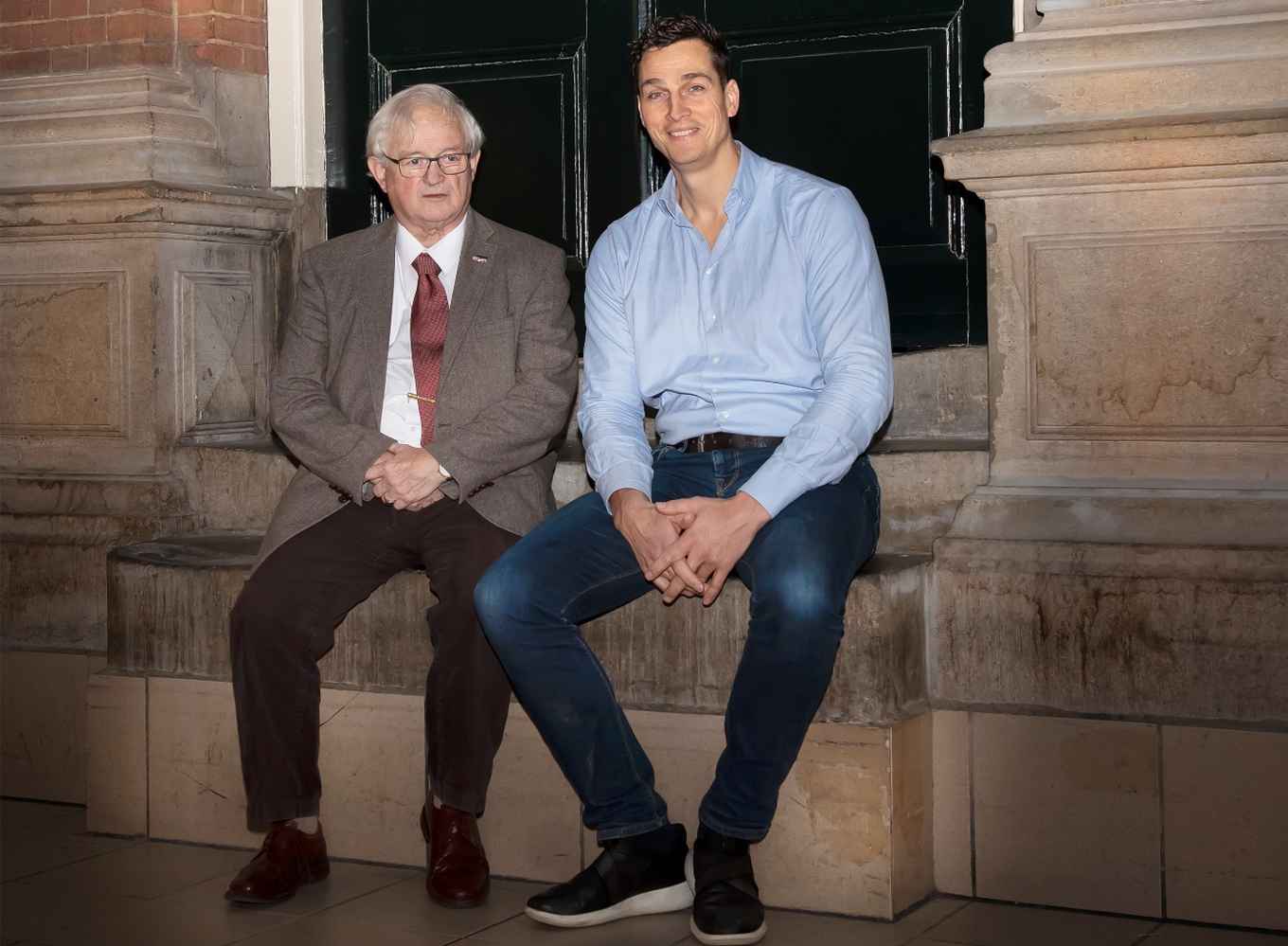The story behind BG5
6 February 2020

The former internal medicine clinic (now BG5, ed.) is where Jager did his internship in internal medicine. 'The pyramid that now adorns the entrance to the building wasn’t there in my day. Inside, the old façade with two entrances is visible. You went left to the men's ward and right to the women's ward. They were strictly separated back then.'
Twenty patients on a ward
'Internal medicine was on the first floor, dermatology on the ground floor and the laboratories and staff rooms on the second floor. There were two round lecture halls in the middle, one above the other. During my internship, we would visit one of the four hospital wards with Professor Borst from Internal Medicine every Friday afternoon. We thought it was quite normal to have 20 patients on a ward. We had intense medical discussions, which I found particularly educational and enjoyable.'
Small scale
According to Jager, the Binnengasthuis Hospital was a welcoming hospital. 'Everyone knew it. As a student, you were involved in everything and treated humanely because it was on a small scale.' Jager attended lectures on surgery, internal medicine, paediatrics, skin diseases and STDs. 'During the clinical lectures on a particular topic, diseases and disorders were demonstrated in patients.'
First aid
'Part of the hospital was a First Aid station for the centre, the so-called Waiting Room. All kinds of cases came in there; casualties of accidents and fights, as well as sick people. I remember that during our consultations, people would say: Professor, the waiting room is calling! And then the resident on duty would be sent to the waiting room. The peak time was between 1 am and 5 am. We knew exactly when each pub would close.'
Beneath the clock
'Where the Academic Club is now, there is a large clock on the roof. This marked the location of the outpatient clinic for skin diseases and STDs', says Jager. 'If someone had been under the clock, that was all you needed to know. Sexually transmitted diseases were widespread, with the port and the red-light district just around the corner.'
Nicely dressed
Lectures were also held on Saturday mornings. 'You had to attend, and you had to be properly dressed. People would check up on you. For example, Professor Van Creveld of Paediatrics had a head nurse who kept an eye on everything. If you came to his exam and you'd missed too many lectures, he would say, “The nurse didn't see you, sir" and then you could leave', laughs Jager.
Ether
'In the year I started medicine, there were 110 medical students. Of these, 95 graduated.' He graduated as a medical doctor at the age of 24, along with his wife. 'I already had a job in the laboratory as an anatomy and embryology assistant at the time. We also attended a GP's office in Amsterdam-Oost together on weekends.’ In the end, Jager specialised as an anaesthesiologist. 'That was in its infancy back then, this was 50 years ago. I was still using ether to anaesthetise people.'
Former glory
Jager is pleased that the UvA is restoring the buildings on the Binnengasthuis premises to their former glory. 'BG5 is a wonderful monument. I'm told that they want to keep the BG5 atrium for discussions and debates, among other things. That's great. Bringing the city to the university is part of the building’s history. The whole city used to come here, after all.'
The future of BG5
Niels Tuip, UvA project leader:
'After the renovation, BG5 will become the central location on the campus. It will be a teaching and study location, a pleasant and inspiring environment for meeting and exchanging ideas and a place where you can eat and drink. Improving the liveability of this monumental building is a crucial factor. For example, the UvA wishes to restore the round lecture halls to their former glory.
‘The building will be given a clear and accessible entrance on Vendelstraat. The UvA wants to tempt visitors and passers-by to come in. Just like old times, when everyone would find their way to the ‘new clinic’.
‘The current atrium is being renovated to give the Faculty of Humanities a special place to organise activities. The atrium also helps to insulate the building, which is fully in line with the UvA's sustainability ambitions. At the moment, together with our architect Ector Hoogstad, we are still talking to the municipality on how we can give shape to these ambitions.'